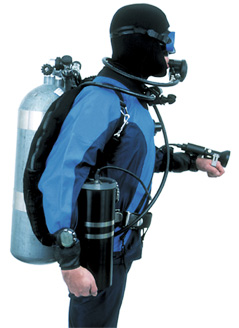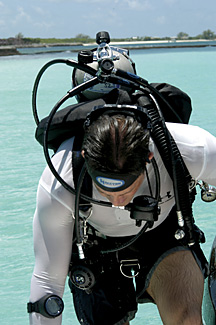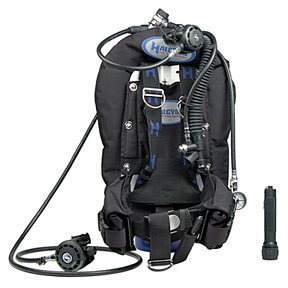chrpai
Contributor
yup i used my same octo hose, hope I don't get bashed for my primary being a yellow hose.
Based on how you are using it, yellow makes sense. When you donate the primary you are effectively hanging over an octo.
Welcome to ScubaBoard, the world's largest scuba diving community. Registration is not required to read the forums, but we encourage you to join. Joining has its benefits and enables you to participate in the discussions.
Benefits of registering include
yup i used my same octo hose, hope I don't get bashed for my primary being a yellow hose.
Nothing should ever loop around your neck.
(the bungee being the only exception)
There are some that should....


Regulator Configuration
Diving With One First Stage
Shallow, open water divers often use one first stage attached to a single tank. With a single regulator, the two-second stages come over the diver's right shoulder while the pressure gauge and power inflator run to the left.

Diving With Two First Stages
Divers use double tanks for technical diving not only because they seek to increase their available air supply, but also because they understand the safety margin provided by redundancy. Therefore, the use of double tanks usually indicates deeper or overhead diving. Both single tank diver and double tank diver systems require the following configuration. Open water divers using a single tank should assume that all necessary hoses run from one first stage. In a doubles configuration, the primary second stage regulator is attached via a long hose to a first stage that is affixed to the diver's right post (right shoulder). This configuration not only ensures redundancy, but also facilitates gas sharing. The long hose runs straight down behind the wing, under the light canister (if one is worn, if not it is routed around the knife, or tucked into the belt), back up the left side, and around the neck; the attached second stage is then placed in one's mouth and breathed. During an emergency air-sharing episode, divers will have to unclip this regulator to pass it to an out-of-air diver. While using stage or deco bottles, donors should pass the regulator in their mouth (stage or deco) and then deploy the long hose. Should the out-of-air diver need additional decompression gas, the divers will likely take turns using the bottle (such as five minutes each) or buddy-breathe. Out-of-air divers should also be practiced in going directly to the long hose, and be able to breathe from it while it is still clipped off, deploying it later without assistance. Divers must also practice quickly deploying the long hose in a variety of situations.
The choice of 40" primary is interesting. I've heard of a 5' under the arm but not 40".
yup i used my same octo hose, hope I don't get bashed for my primary being a yellow hose.
and I thought there was a routing difference between 5' and 7', in that the 7' makes an extra loop around the neck whereas the 5' just comes behind, but of course I've never seen it in person so idk
Hi All,
I recently decided to give BP/W. Got a Hog setup from Scubaboard member Jim Lapenta @ UDM Aquatics, customer service was top notch, he helped me decide on the system and offered other advice on hose configurations etc. He also offered to thread the system for me which I refused as I wanted the experience of doing it myself. Following the packaged instructions and double checking with online resources made threading the system a breeze, I’d say that anybody who can follow instructions can set up one of these.
Here's the pictured setup:
View attachment 157550
My wife and I also switched to a 40" under the arm primary with secondary bungeed around the neck.. this setup makes so much more sense than the traditional secondary placement... your backup is a few centimeters away and its so seamless to donate air from your primary. Good stuff
I’ve only done one pool session with the new setup and after a crotch strap adjustment I must say hands down I will never revert to a traditional BC again, the system is extremely simple and clutter free it changes the whole experience, not to mention staying trim was easier than ever. At times it felt like I wasn’t even wearing anything as compared to my previous Mares Dragon.
So there it is, another recreational diver that has been convinced that BP/W’s are not only for Tec divers… I hope that stigma is removed soon so that more rec divers can enjoy what bp/w’s have to offer.
I have a dive trip at the end of the month and now I’m even more excited to put the new setup to practical use… it’ll be great
M
---------- Post added June 19th, 2013 at 04:50 PM ----------
here is how the hose should be routed per GUE's website:

---------- Post added June 19th, 2013 at 04:51 PM ----------
